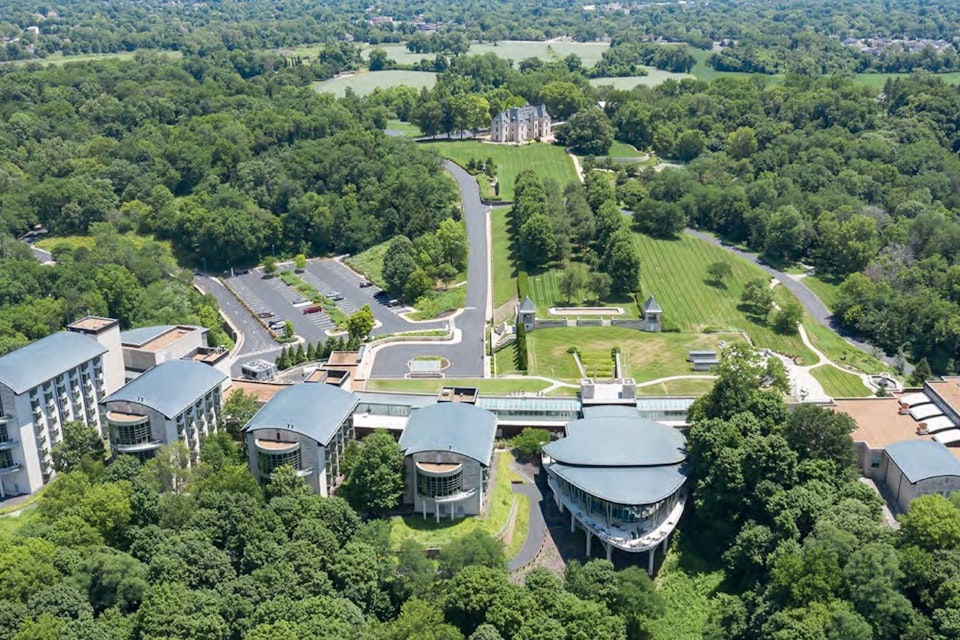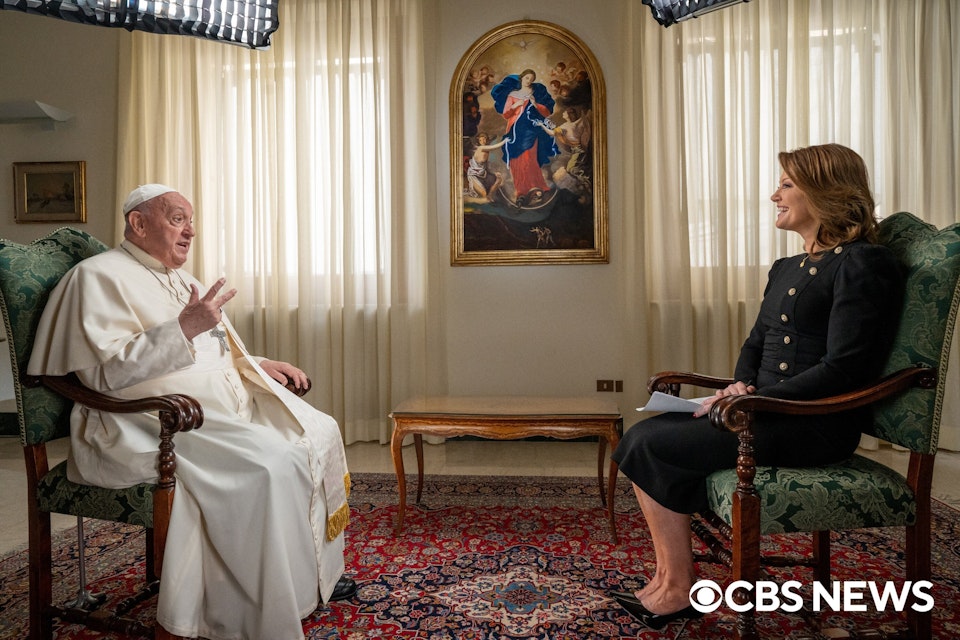From one-on-one lessons to creative video projects, local Catholic school teachers are sacrificing their time and energy to serve students in need
CLARKSTON — The alarm clock has become the morning bell. The breakfast table has turned into first hour. And science class is now at 2 p.m. — or 8 p.m. — or whenever.
The look and feel of school might be one of the most dramatic changes in quarantine life, with Zoom meetings replacing recess and teacher-made videos substituting for in-person lectures.
When live classes were suspended in March because of the COVID-19 pandemic, schools scrambled to revamp their curricula, taking a crash course in online education.
But while the pandemic created several challenges for continuing education, Catholic schools in the Archdiocese of Detroit charged ahead undaunted, plunging themselves into a brave new world of remote education.

“Overall, I would say this last month and a half has been very successful, considering the circumstances,” Christina Nielson, a fifth-grade teacher at Everest Academy in Clarkston, told Detroit Catholic. “Anytime you have change there are going to be some hiccups and glitches, but I feel as a community, our teachers have really come together. All the pieces of the puzzle have been linking together.”
The “puzzle” includes teaching the comprehensive curriculum parents expect from Catholic schools, but also the spiritual aspects of a Christ-centered education, beginning lessons with a prayer and livestreaming school Masses when possible.
Nielson and teachers across the archdiocese are using Google Classroom and other online platforms to upload lessons, assignments and resources for students to download throughout the day. Teachers use weekly Zoom meetings to answer questions about assignments and provide feedback.

Giving students the option to pick and choose when to engage in lessons is one of the biggest changes to the school routine, Nielson said.
“We have students who get right on at 9 a.m. and bust everything out,” Nielson said. “We also have students who won’t get on until the afternoon. So if they have questions after 3 p.m., I know I could tell them, ‘Sorry, I’m not taking questions,’ but realistically, we’re not going to do that.
“Every child has a unique situation right now with parents’ work schedule and access to devices,” Nielson continued. “We don’t pretend to understand what they are going through as a family, but we want to help as much as we can. If that means an individual Zoom meeting at 6:30 a.m., I’ll do that. Or if they want to talk at 7:30 p.m., we can do that, too.”
From one classroom of 25, to 25 classrooms of one
Accommodating 25 students who live in 25 different circumstances is part of the new routine for teachers.
“In a classroom setting you can reach 25 kids at once as opposed to 10 kids asking the same questions throughout the day, even though you post it over Google Classroom,” said Kara Waltz, a seventh-grade math and eighth-grade science teacher at Our Lady of Sorrows School in Farmington. “So you find yourself answering the same questions over and over again.”
In addition to posting lessons, many teachers have added video content production to their many roles. Waltz makes recorded instructional videos to accompany her lessons, noting her living room has turned into “production central” these days.

“The videos required me to make a video camera holder stand, something I didn’t have at my house,” Waltz said. “So I got creative with some wood I had in the basement, doing what I could to fashion it together. It’s not something I would normally do in a classroom setting.”
“Not normal” is the order of the day with distance learning. But teachers have adapted with the resources that are available.
Miriam Lynch, a music teacher at St. Joseph School in Lake Orion, instructed her students to make a drum from household items, and challenged them to create videos of their families — sometimes including stuffed animals — singing Rodgers and Hammerstein’s “Sound of Music.”
The music lessons keep the students engaged, but have also brought moments of brevity for families in lockdown.
“Sometimes I get the whole family to join in the drum lessons, parents singing along to Queen’s ‘We Will Rock You,’” Lynch said. “You know the parents are there. One of the kids got really creative with the homemade drum sets, including cymbals with the drums.”

Working with parents is key to remote teaching, teachers say. While parents are natural teachers of their children, it’s key to making sure students complete lessons and stay engaged.
“A large number of parents are working from home, but everyone has their own schedule, so the biggest challenge is being flexible on my part,” said Cathy Rowe, a preschool teacher at Guardian Angels School in Clawson and member of the school leadership team.
“We have some students who do their online work after 5 p.m., because Mom and Dad are using the technology during the day,” Rowe said. “So I make myself available in the evening, doing drive-by visits with students, going to their homes and honking my horn, sometimes having a nice conversation with parents.”
The class continues its routine of daily prayer, show-and-tell and special events like a May Crowning at a student’s home, Rowe said.
Working with preschoolers, Rowe has spent many of her Zoom classroom sessions talking about students’ feelings during the pandemic. Routine is everything for preschoolers, she said, but times like these are anything but routine.


“I had a lesson where I brought out a stuffed animal, Petunia the Pig, and invited them to bring out a stuffed animal,” Rowe said. “I asked them to talk about how the stuffed animal makes you feel, whether it’s angry, sad, and we go through the meeting that way.”
Zoom meetings with fifteen 4-year-olds descend quickly into chaos, Rowe said. But helpful tools such as the “mute” button restore order.
Teachers miss the personal connection
The longer the lockdown lingers, the more teachers and students become adept with technology, but nothing beats face-to-face interaction, teachers told Detroit Catholic.
Eventually, the novelty of distance learning and student-teacher Zoom calls wears off.
“I feel like I’m working more now than ever,” said Jayne Galbreagh, a seventh- and eighth-grade math teacher at Our Lady of Sorrows. “It seems I’m spending more time grading and tracking down assignments; the administrative side to remote learning is a lot of work. Part of the day is making lessons and videos, responding to emails, questions and Zoom meetings and classes.”
Galbreagh and other teachers often work up to 12 hours a day, being available for calls from 6 in the morning to 6 at night. Students do have to log in at certain times to complete quizzes, but every student’s learning habits are unique.

“Students are used to learning together in a classroom and being present, learning through hearing it, seeing it, practicing it and doing it, so now I’m trying to provide more feedback on assignments than normal,” Galbreagh said. “I’m working on paring it down to the things that are really important, avoiding the ‘busy work’ and making sure they have the key concepts down, presenting the lessons so they can do it on their own schedule.”
Some courses lend themselves better to online learning than others, but mathematics and computer science teacher Nghiem Nguyen of Everest Collegiate High School in Clarkston said even though students have grown accustomed to working on computers, the personal interaction can’t be replicated.
“Computer science is a little smoother remotely, because we have students writing source code, compiling and sending it, and I’ve found an online version where they can do that, but the real difficulty is being able to visualize some physical things,” Nguyen said.
“Discussion is a big part of mathematics and computer science,” Nguyen said. “We have Zoom conferences that are optional for students, where once a week per class they can call in and ask live questions.”
Adjusting to the times
Nguyen said his students have been able to grasp most of the course material, but with the internet at the tip of students’ fingers, coming up with challenging tests and quiz questions that can’t easily be found via Google search has been important.
While the important thing is that students understand key concepts, parents nevertheless expect students to receive grades, Nguyen said.
“Grading has changed, given that we have to give students more time to learn various things with all that is happening,” Nguyen said. “We still have tests, quizzes and assignments, but the pace has been slowed to make sure students have the time they need.”

The situation is far from perfect, but teachers like Nguyen and Nielsen’s herculean efforts to finish the school year haven’t gone unnoticed.
“Times like these have caused all of us as teachers, students, parents and administrators to pause, look inward and really dig deep to persevere,” Nielson said. “We know our students miss us, they miss the opportunity to play sports and see their friends. They could have chosen to mope about it and complain, but they really took on this distance learning with positive attitudes.
“Students want to do well, they still want to learn,” Nielson added. “They have a sense of gratitude for the blessings and gifts God has given them. I think it’s beautiful they are choosing to see this as a challenge, but a challenge they met.”
Editor’s note: An earlier version of this story incorrectly stated some public schools in the state ended their school years early because of the pandemic. While public schools in other states have taken this route, Michigan’s public schools have continued distance-learning education. Detroit Catholic regrets this error.










